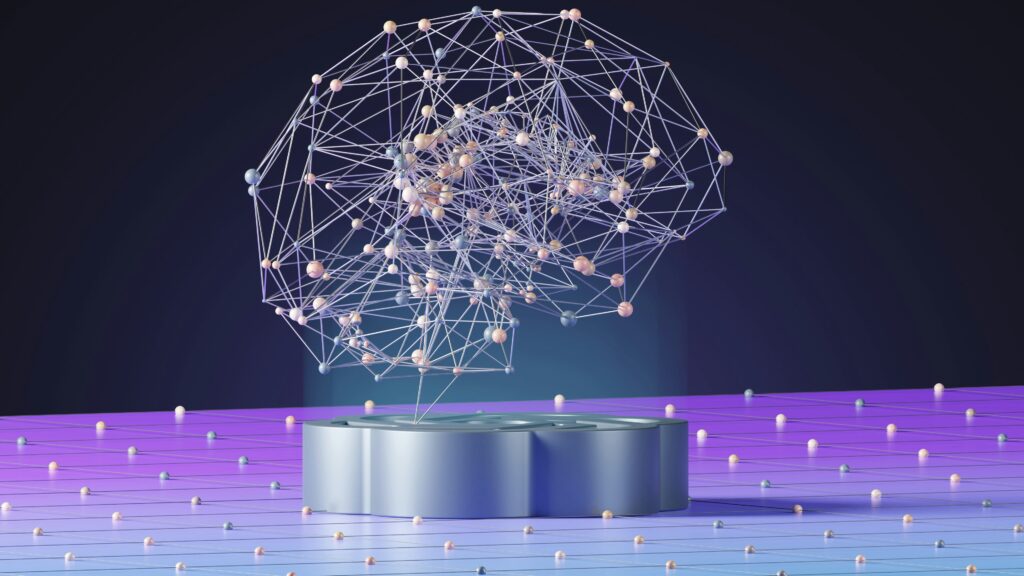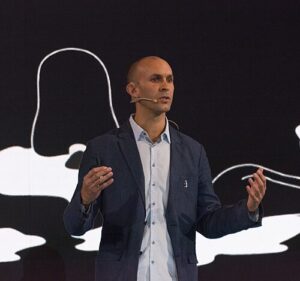Main Highlights
The session moves from concrete examples (color vision) to unifying theories (predictive processing), then to implications for emotion, selfhood, technology, ethics, and clinical realities. Seth contrasts the brain–as–computer metaphor with an embodied, biologically grounded view.
- Why consciousness matters: Everything that matters to us does so via conscious experience; children’s questions (“Why am I me?”) capture its centrality.
- Color as case study: Physics gives a thin “visible” slice; three cone types and brain inference produce perceived color. Examples include “The Dress” illusion, color blindness, lab reports of laser-induced “new” colors, and stroboscopic visual phenomena.
- Controlled hallucination (predictive processing): The brain generates top-down predictions to explain sensory inputs; experience is the content of these best guesses.
- Emotions as interoceptive inference: Extends James–Lange (bear example): feelings arise from the brain’s predictions about bodily states in context—the same mechanism as perception.
- Beyond the computer metaphor: Brains are embodied organs without a clean hardware/software split; neurons are metabolically alive. Exercise and bodily states shape mind; the brain is not just a detachable “processor.”
- The self as process: No single essence; aspects (emotion, free will, identity) can dissociate yet feel unified. Free will and uniqueness are especially salient and vulnerable.
- Tech on the horizon: Digital avatars and brain–computer interfaces (BCIs) promise clinical gains (Parkinson’s, paralysis, sight restoration) but raise risks of cognitive enhancement and externally induced intentions.
- Dementia and continuity: Personal story of hospital-induced delirium illuminates how identity can change while deep continuity remains; gradual change often goes unnoticed.
- Drugs and consciousness: Anesthesia reveals “absence”; psychedelics powerfully alter experience. Both link consciousness to brain function, while some interpret psychedelic insights metaphysically; therapeutic potential is promising but still under evaluation.
Key Takeaways
Conscious experience is actively constructed by brain–body predictions constrained by the world. Understanding this helps us navigate personal identity, emerging technologies, and care for loved ones with cognitive change.
- Perception and emotion are best-guess inferences: the brain predicts both the world (exteroception) and the body (interoception).
- The “self” is not a single thing; it is a multifaceted, continuously changing process—seeing it this way can be stabilizing in illness and aging.
- Embodiment matters: brain function and bodily state are inseparable; the computer metaphor has serious limits.
- Ethical guardrails are urgent for avatars and BCIs: protect agency, privacy, and against externally induced intentions.
- Be informed participants: understand basic mind/brain principles to shape policy and regulation before harms scale.
- Psychedelics and anesthesia underscore the brain–consciousness link and reveal how constructed our normal experience is; therapeutic use requires rigorous evidence and care.
Audience Insights & Q&A
Questions from the host and audience scenarios highlighted subjective diversity, personal identity concerns in the AI era, practical guidance for safeguarding agency, caregiving challenges, and the meaning of drug-induced state changes.
- Color blindness: Chris’s difficulty distinguishing blues/lavenders illustrates individualized subjective worlds; “The Dress” shows identical inputs can yield different experiences.
- Uniqueness vs. uploading/avatars: Seth expects avatars to grow convincing yet remain ethically fraught; they challenge intuitions of uniqueness and selfhood.
- BCIs and free will: Clinical benefits are compelling, but enhancement and stimulation that induce intentions threaten perceived agency; regulation is essential.
- What can we do? Don’t be intimidated—seek foundational understanding, demand transparency, and participate in shaping norms and rules before harms become entrenched (unlike social media).
- Dementia care: Recognize deep continuity beneath change; adopt a process view of self to support compassion and connection over time.
- Drugs (anesthesia/psychedelics): Anesthesia evidences consciousness’s absence; psychedelics show its malleability. Both are consistent with brain dependence, even as some interpret psychedelic insights metaphysically.

